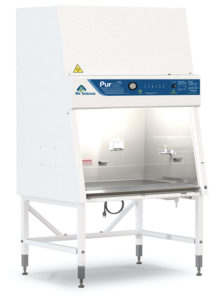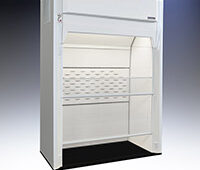 The Purair BIO Class II, Type A2 Biological Safety Cabinets (BSCs) provide a primary containment work area for life science research, cell culture processing, and other applications where protection of the user, the work product, and the environment, and mitigation of cross-contamination on the work surface are needed.
The Purair BIO Class II, Type A2 Biological Safety Cabinets (BSCs) provide a primary containment work area for life science research, cell culture processing, and other applications where protection of the user, the work product, and the environment, and mitigation of cross-contamination on the work surface are needed.
Biosafety in the laboratory is critical when work involves infectious diseases and toxins, as well as in cell and tissue culturing, where product contamination must be avoided. Prevention of lab-acquired infections to personnel can also be achieved by reducing potential exposure to droplets or splashes, preventing contaminants from escaping the work area.
A Biological Safety Cabinet provides a safe laboratory workspace using maximum airflow design combined with an integrated HEPA filtration system. Room air is drawn in through the intake grille on the front of the unit, then under the work surface and directed to the top of the cabinet where it passes through a HEPA filter.
Negative pressure is created inside the cabinet resulting in a primary containment work area while the HEPA filtration supplies clean air to the work surface in a vertical laminar flow pattern. These airflow patterns provide an optimum air curtain on the front opening, maintaining personnel and product protection. The exhaust HEPA filter traps biohazardous particles prior to the air being exhausted back into the laboratory, preserving environmental protection.
For more information, visit airscience.com/biological-safety-cabinets





Tell Us What You Think!